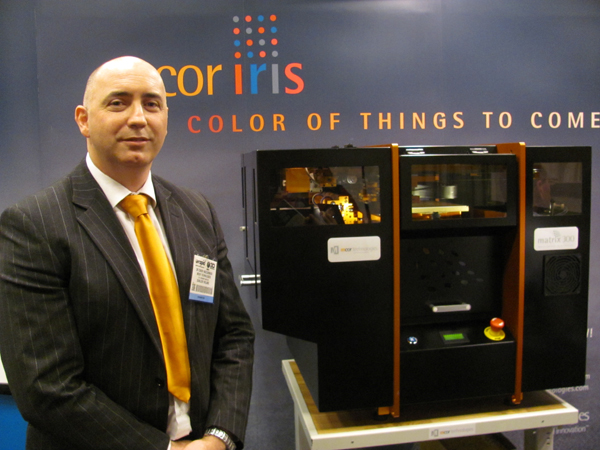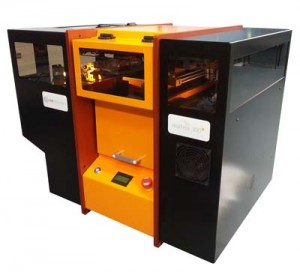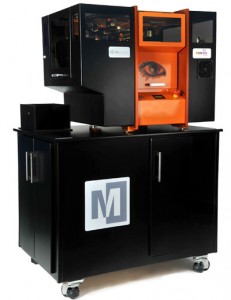Company Profile: Mcor Technologies

August 18, 2014
Editor’s note: In an effort to help our readers differentiate the companies providing rapid technologies, we will be profiling them on Rapid Ready Technology. If you are a rapid technology manufacturer or service provider and would like to be considered for a profile, please contact us.
 Just like with any narrative, the real stories behind additive manufacturing (AM) are stories about people. It wouldn’t be possible to discuss Mcor Technologies without talking about the brothers that co-founded the company in 2004. Conor MacCormack, co-founder and CEO; and Fintan MacCormack, co-founder and CTO.
Just like with any narrative, the real stories behind additive manufacturing (AM) are stories about people. It wouldn’t be possible to discuss Mcor Technologies without talking about the brothers that co-founded the company in 2004. Conor MacCormack, co-founder and CEO; and Fintan MacCormack, co-founder and CTO.
Both brothers hold engineering degrees and were successful before Mcor Technologies was a passing thought. Conor was part of the team working on the Airbus A380 and Fintan was involved with the semiconductor industry. Each worked with AM systems as part of their jobs, and eventually began to tinker with their own 3D printer. The goal was to build a reasonably priced AM system that didn’t require expensive materials.
 Conor MacCormack of Mcor Technologies and the Matrix 300 printer.
Conor MacCormack of Mcor Technologies and the Matrix 300 printer.“We had this really bold idea,” said Conor. “We felt the running cost was the big Achilles heel, and at the time there were no entry level machines. The machines in Europe were running $80,000 to $100,000 at the lowest price point. So our bold idea was to see if we could build a machine at the $20,000 to $30,000 mark, and, more importantly, one that would have almost zero running costs.”
 The Mcor Matrix 300+ 3D printer.
The Mcor Matrix 300+ 3D printer.It was with low material costs in mind that the MacCormack brothers designed a system to use standard office paper as its material. At the most basic level, Mcor 3D printers operate by laying down paper a sheet at a time where it’s cut before being attached to the next sheet by a water-based adhesive. The end result of the process is an object built by layers the same way as other AM systems.
Paper is an interesting material to work with for AM. Once an object is built, it’s very simple to introduce infiltrates to the finished piece to increase durability. Paper is also easy to color, allowing Mcor to produce full color prints using the International Color Consortium’s standard color profiles. Mcor systems are also green. Any excess material waste is recyclable.
Systems
The first widely available system produced by Mcor Technologies was the Matrix 300 in 2012. As luck would have it, 2012 is seen by many inside the AM industry as something of a turning point in interest in 3D printing as an up-and-coming technology. The combination of increased interest and a novel build material made the Matrix 300 an instant sensation, with one or both of the brothers appearing in magazines and newspapers, and on the BBC.“It was surreal, said Conor. “All the hits on our site, after you feel like you’re just bashing your head against the wall. There’s just the two of you, and there’s all these experts telling you that it’s impossible, that you’re not going to be able to do that, it just won’t work. To see it start to work was a gratifying moment, but also daunting.”
The Matrix 300 quickly improved to become the 300+, but the next big step forward for the company was the launch of the Iris in late 2012. This was Mcor’s first foray into full color 3D printing, and it attracted the interest of businesses and new investors. A deal with Staples brought Mcor systems to the retail chain as part of Staples’ print center, and Mcor has been the beneficiary of at least $30 million in investments in 2014 alone.
The Future
 The Mcor Iris full-color 3D printer uses paper to construct 3D models.
The Mcor Iris full-color 3D printer uses paper to construct 3D models.Asked to look into his crystal ball, Conor said he sees a trend for enterprise level AM to move away from being largely based around rapid prototyping, to becoming widely accepted for end-use manufacturing. He also expects the enterprise level technology to mature in regards to improved accuracy and quality assurance.
At the other end of the spectrum, Conor said he expects color to become a deciding factor for home AM systems. Mcor’s experiences at 2013 CES largely involved people coming into the booth to examine the full color prints produced by the Iris. Given the choice between a mono-color 3D printer and a full-color 3D printer, Conor says he expects people to choose color.
 Scrooge: An example of a the output from the Mcor Iris 3D full-color printer.
Scrooge: An example of a the output from the Mcor Iris 3D full-color printer.“The promise of 3D printing isn’t hype,” said Conor. “The desire is there to have [3D printing] and that’s the big driver. This is just the start.”
Sources: Interview with the company, press materials received from the company and additional information gleaned from the company’s website.
Subscribe to our FREE magazine, FREE email newsletters or both!
About the Author
John NewmanJohn Newman is a Digital Engineering contributor who focuses on 3D printing. Contact him via [email protected] and read his posts on Rapid Ready Technology.
Follow DE





